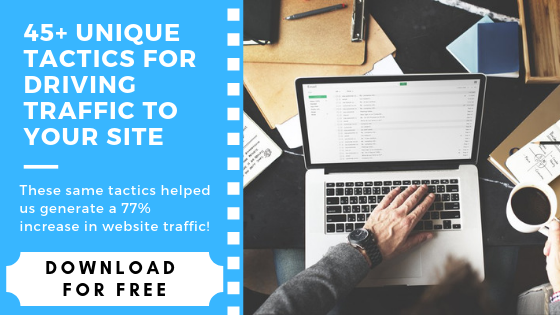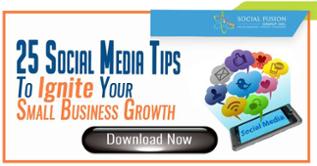Growing traffic and leads are two major stepping stones for business growth and topics that are talked about and analyzed extensively on the web; and this is absolutely necessary, but they don’t tell the full story.
Most businesses manage to get a decent following, traffic, and satisfactory leads, but don’t end up seeing the profit they were imagining. This can be frustrating, and rightfully so. The issue here is conversion from leads to customers, and the best way to assure that you are turning visitors to consumers is through a sales funnel.
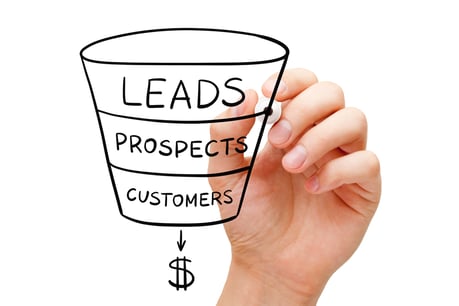
In the following paragraphs we will be looking at the key factors that comprise a sales funnel, in an attempt to provide you with a sales funnel template of sorts to begin your journey to profit.
What is a Sales Funnel?
Before we begin, let’s really focus on the term “sales funnel”.
A sales funnel is a multi-step marketing strategy for generating sales from consumers. Your visitors will enter through the top of the funnel, and through a series of marketing tactics, emails, and communication, you will try to guide them towards the bottom of the funnel where they finally make a purchase.
Of course, not all leads will make it all the way, and that is fine. There are always ways to continue to nurture them and guide them towards a purchase, but more on that later.
The four stages of a sales funnel
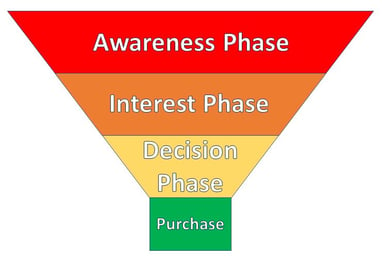
The four stages of a sales funnel include: awareness, interest, decision and action.
Awareness Phase
The first step in the sales funnel, awareness, involves actually getting your traffic to convert into leads. It is during this phase that individuals are aware of a need, issue, or pain they may have, and have begun to seek for ways to solve it. This is where you need to get their attention and have them enter the funnel. As you might already know, this can be a bit easier said than done.

During this phase you will need to use a combination of “hooks” or phrases that will connect with your audience. Show them that you are aware of the issue or need that they might have. Include keywords and phrases that resonate with what they might be feeling and looking for. Not only will you get their attention but it will show them that you really know what they are going through right now. This is the first step to gaining their trust, and most importantly triggering their curiosity.
Interest Phase
Moving from the top, towards the middle of the funnel we have the “interest” phase. This second phase is when your audience is actively trying to find a solution to the issue they became aware of previously. This is when your product introduction comes into play. Remember the “hooks” we used before? These play an even bigger role here. In this phase you essentially want to make your leads aware of ways that you, or your product, can solve their current need.

Use blog posts that mention or complement your offer. Offer some free insight, and never stop providing value. This is when you not only continue to build trust, but now you are starting to show that you know your stuff, that you are an authority on the matter.
Decision Phase

Slowly moving from the middle to the bottom of the funnel, we have the third stage, the “decision” phase. During this stage, your audience has done their research, they know they problem, they know what needs to be done to solve it, so now they are looking for product alternatives. It is during this time that you need to convince them to purchase your products.
This is when being seen as trustworthy, and an authority really comes into play. Here you want to stand out from competitors, and be considered as the best option in the market. Apart from you own content, graphics, and emails, one of the best ways to achieve this is through user-generated reviews and testimonials. Show your prospects that, not only do you know what they are going through, but you have helped many others with the same need.
Purchase Phase
The last stage of the sales funnel, or the bottom of the funnel, is where is where the lead makes the decision to close the deal and purchase your products or services. This is where all the hard work pays off, but it’s not entirely the end. While a purchase has been made, and you achieved your goal of making a sale, there is always more that can be done.

Since this customer purchased once from you it means that they trust you. Now is the time to begin building relationships with them. Ask how the product is serving them, if they are satisfied, and you might even try to upsell or offer something additional that is relevant. In essence, a whole new funnel can be created called the nurturing funnel but that is a topic for another day.
Why are Sales Funnels Important?
Sales funnels play an important role for your business in the form of uniformity and efficiency. What do we mean by this? Let’s look at each one individually.
Uniformity is important as it guarantees that each individual that enters the funnel is exposed to the same emails, same content, same series of marketing actions. Each person will experience the same flow. For some it will be enough to convert, while others might need a bit more time or convincing. This also helps you segment those ready to buy versus those that you might need to work on a bit more. It might even filter out people that might have not been your target audience in the first place, and that is ok. Different offers are for different people.

Efficiency, is important for you as the owner. A sales funnel might take some work to put together, but it ultimately transforms into an automated process that guides your audience through the funnel with little to no interaction from you. With everything being automated, you will have time to work on other important aspects of your business, and focus on growth rather than tackling each entry individually (which might be overwhelming or even impossible).

The process of creating a sales funnel however, must be taken seriously. Cutting corners can severely dampen your ability to increase your revenue.
Finally, something that many people don’t realize (because they can’t see it) is that, sales funnels can help you stand out from the crowd and your competitors. With the way the market is today, it is extremely likely that someone else is offering something similar, or even identical, to what you currently are. Let’s assume for a moment that all your marketing tactics are also the same. The one differentiating factor for your audience will be the sales funnel, something they cannot see right off the bat. If you create a funnel that has a smooth, logical, and nurturing flow, chances are that you will win them over. By showing your audience that you truly understand their needs, that you care about them, and that you are qualified to help them will help you convert them much easier than say, a competitor with a short and unorganized funnel.
Setting Up a Page
Perhaps the most important part of any funnel is getting someone to actually enter it.
The whole purpose of the page is to get the visitor to become a lead and enter the funnel, so layout is way more important than you might realize. Strategic placements of CTAs, graphics, text, etc. can go a really long way.
On a Webpage
On a plain webpage, you will want your CTA to be visible, and not drowned out by the rest of the content on the page. Make it look visually appealing, and have it stand out. Use complementary colors to your brand, and make any text easy to understand and read.
Once you have the appearance down, strategically place the CTA in areas your audience’s eyes will naturally be drawn to. Also do not neglect banners. Banners can often offer large amounts of page real-estate, and can “follow” your audience around your site, so there will always be a chance to be seen and interacted with.
On a Blog Post
In a blog, be sure to add the CTA close to the top and bottom of the page. The former will allow for the reader to be introduced to it early on and catch their eye, while the latter is there as closing for your audience to click on once they’ve finished reading. Of course, the use of side banners and even pop-ups can go a long way here as well.
On a Landing Page
Landing page layout is also important. You got your audience to click on the CTA and go to the landing page, but that does not mean that they have entered the funnel yet. They will need to give you their email first.
Be sure that the form is easy to fill out, and only ask for the absolute necessary information. If you ask for a lot of personal info, it will turn away a large majority of your audience. Don’t overwhelm them either. Copy on these pages should be short and sweet. Describe what they are about to give their information for, what value they are going to get, and how it will solve their current issue.
Important: One very important thing to remember is, never add additional links on your landing page. The sole purpose of this page is to get your audience to submit a form. No other distractions should be present.
On a Thank You Page
Thank you pages can be a bit more creative. Aside from a thank you note and a button to proceed, you can also add additional reading, other relevant links, and any other action you might want your lead to perform. This could include a potential upsell, a simple follow on social media, or to just go back to the main website or blog and proceed browsing.
The Need for a Follow-Up Process
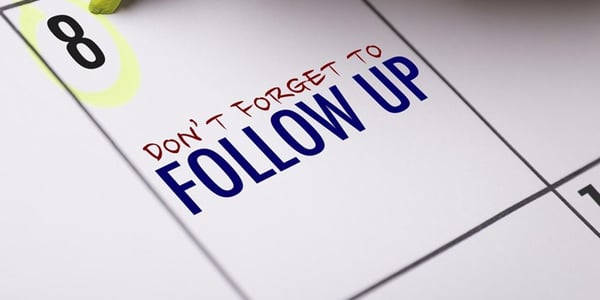
We touched on this slightly before. Following up is an integral part of any marketing, nurturing, and sales funnel. Follow up can come in a plethora of forms, but here we will be focusing on two distinct categories. One after the purchase has been made, and one if a person does not feel ready to convert.
Let’s say a person just purchased a product. Great! But don’t just leave them be. First of all thank them for making a purchase. This might sound simple but it can go a long way in making something look personable, versus being another faceless business. After a few days, follow up again and ask them how things are going for them. Ask for feedback on your product. Is it serving them as intended? Are they satisfied? Is there room for improvement? Show them that you do actually care, and didn’t just vanish after the sale was made.
Another great thing to do is continue to offer some valuable information, relevant to their pain or need. This will help you be top of mind, and slowly begin to nurture a relationship. Take a moment to ask yourself, who do we tend to do business with? The answer is “with those we know, with those we trust.” The more you communicate and nurture a relationship with your audience, the better the chances of them becoming loyal and repeat buyers.
On that note, in follow ups, you can also introduce the idea of upselling. Start low, and the better the relationship between you and your customers becomes, the higher the upsell can go.
Follow ups, and nurturing can also go a long way later on. These loyal customers can end up referring their coworkers, peers, and followers to purchase your product as well.
Honestly, we can spend hours talking about follow up processes, sequences, and tactics, but that is a topic for another time.
But what if the lead is not ready to convert? What if they are stuck in a higher stage in the funnel. This is where follow up is integral. Here you need to show compassion and understanding. Continue to provide some valuable insight, and build the trust we mentioned above. Show them that you truly understand their current pain point or need, and assure them that you have what it takes to help them out. Again this will need to be done in a nurturing manner, like we said above “who do we tend to do business with? Those we trust.”
Prime Examples of Sales Funnels
Setting up a sales funnel can seem difficult for someone with no experience utilizing the template, but there are plenty of examples of successful sales funnels. There are services that can assist you with this process, but you can also conduct some research into why these examples find their success. You can use these as a source of inspiration when following the process.
- Netflix- Netflix is a streaming service that uses the sales funnel template effectively because of its focus on the satisfaction of the consumer. They accept multiple forms of payment, such as credit cards, PayPal and gift cards for convenience. There is a significant emphasis on security through the use of passcodes and having the ability to change them if something goes wrong. They also include a risk-free trial that is located on their website, so they can allow consumers a chance to figure out if purchasing their service is right for them.
- Basecamp- Basecamp is a project management and team communication software company that is a great example of using the sales funnel template well. They generate traffic to their website through the use of blogging, public relations tactics and improving their chances of being included in an organic search. Customer feedback and testimonials are included in a section on their website so that potential leads can see their services in action. Basecamp also offers a free trial for people that are unsure if they want to make a purchase.
- MailChimp- MailChimp is an email marketing tool that found significant growth by using a sales funnel. They generate traffic by appealing to organic searches, blogging, direct email marketing and the power of word of mouth. Direct email marketing through the use of lead generation tools is a great idea if you’re unsure where to begin with your marketing campaign. The power of word of mouth is often only seen during the advanced late stages of the marketing process. Having a large number of people that find satisfaction with your brand will greatly increase your chances of word of mouth to occur at a significant scale. MailChimp’s homepage focuses on making their services stand out as more than just a product, but rather as a form of expression and a way to form an identity for brands.
And there you have it, the basis for a sales funnel template. With this post however, we have only scratched the surface of what a properly formulated sales funnel is capable of. Stay tuned for more. As always feel free to follow us on Twitter and LinkedIn.
Be sure to check out the articles below for additional marketing insight:
- How To Use Competitive Intelligence To Outperform Your Social Competitors
- 20 LinkedIn Marketing Tips To Help You Grow Your Business
- The Twitter Page Template That Helped Me Gain 40k Followers
- 24 Tips To Help You Maximize Your Twitter Marketing Strategy
- 36 Facebook Marketing Tips To Help Maximize Your Efforts
- How To Create A Business Page On Instagram To Attract More Customers

